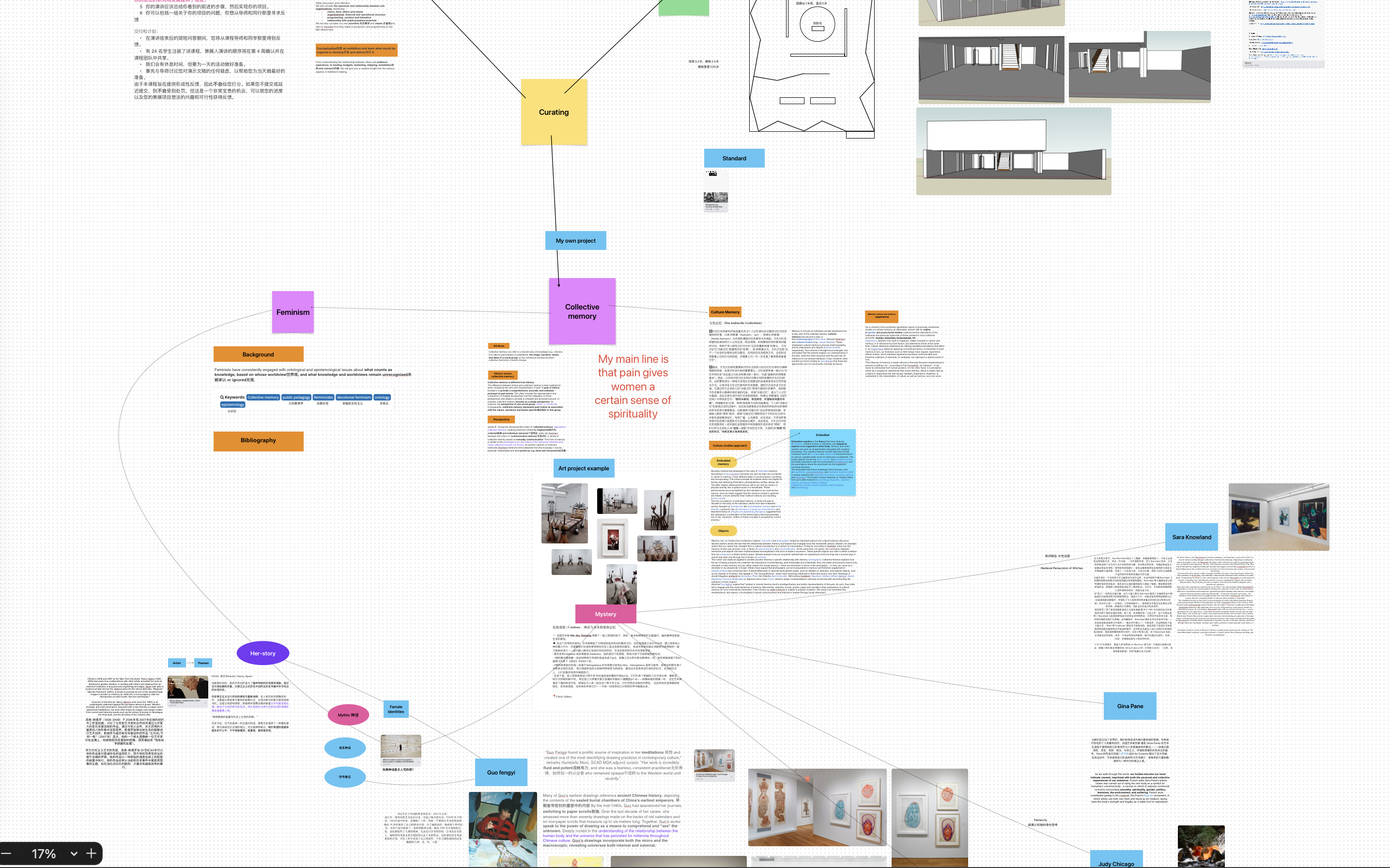During the workshop on week 6, Beth gave a presentation around the basics of project management, and in response to this, I have made some changes and reworked elements of my personal plan in terms of strategy. During the previous week, I had a preliminary discussion about my personal project plan and a curating plan around the theme of women and young artists was initially built up in my mind.
In response to my PowerPoint presentation last week, Jake’s questions and comments about my project focused on 1. the level of artists’ work that was seen and hoped to be included 2. shifting the focus to who was attending my exhibition (online or in Edinburgh).
In fact, this is a question I have been thinking about. As my main line of inspiration comes heavily from some of the most important people represented by galleries and in museum collections, it is almost impossible to think of their work in a ‘secondary’ position, which is not a good idea to ‘throw in the towel’. But this is a thread that can be fulfilled by young artists, Edinburgh has a huge number of young practitioners, and if you look globally, I think the space for selection seems to expand a lot. It’s also very ‘liberating’ for the audience to turn from successful artists to young artists, and for me it seems to be a very good and equal vehicle to facilitate communication about this young art.

This week I have been in contact with some young artists mainly in China.
This week I contacted an artist from my former undergraduate school, MuChen, who is still working on prints, and as I come from a similar background to her, I can empathise with a sense of ‘despondency’ in making female-themed art in China, in addition to the suppression of feminism in the local Chinese context and the In addition to the repression of feminist ideas in the Chinese context and the limited popularity of feminist ideas, and for political reasons, it seems that a large proportion of such artists’ work would have a very difficult time appearing in public without working with a commercial platform that distorts their intentions. I think that if they are given some ‘presence’ through the platform now available at Edinburgh University, it seems that some improvement can be made to their situation, especially on the relatively equal internet.
Another artist from Beijing who is exploring the field of film and television seems to be struggling with something different to the one above, having a male identity but documenting and creating something about the situation of women, which puts him in a very awkward situation. He differs fundamentally from MuChen in that he intervenes in women’s perspectives in his work and research, often from a first point of view, while he is not a trans group, but his work is a direct and powerful attack on Confucianism, a symbol of patriarchy, in a somewhat controversial environment in China. His ‘spiritual’ point of view is very interesting, as he is ideologically ‘attaining the Way’ (which can be interpreted as realising the power of nature) as a woman, and in China, like the male protagonist of the classic novel Dream of the Red Chamber, delves into the situation and destiny of women The “spiritual realm” is entered.
Not only that, but this week Jake and I had a discussion about whether the most important element of Curating is ‘content’ or ‘form’. For me, Curating is a good form, a vehicle for communicating ideas and presenting art visually to an audience, which is why I made it a very important point of reflection when I was finalising my project last week. form is the most important means by which content can be achieved and is an important skill that the course is intended to bring to students.
In fact, however, I now believe that Both content and form are important in the field of curating, and their relative importance can depend on the specific context and goals of the exhibition or collection.
Content refers to the ideas, themes, and subject matter of the works being curated. It is what the audience learns and experiences through engaging with the exhibition or collection. Curators must select works that are relevant and meaningful, and they must also provide context and interpretation to help the audience understand and appreciate the content.
Form, on the other hand, refers to the way the works are presented and organized within the exhibition or collection. It includes considerations such as the layout of the space, the lighting, the materials used for display, and the sequencing of the works. Form can greatly influence the audience’s experience and understanding of the content, and can also communicate additional information or messages.
Ultimately, the importance of content and form depends on the goals and priorities of the curator and the institution they are working for. Some exhibitions or collections may prioritize content over form, while others may prioritize form as a means of enhancing the audience’s engagement with the content.
Reference
- Heinich, N. (1998). The triple authorship of the exhibition. In P. Vergo (Ed.), The new museology (pp. 159-175). Reaktion Books.
- O’Neill, P., & Wilson, M. (Eds.). (2015). Curating and the educational turn. Open Edition Press.
- Pearce, S. (2016). The role of interpretation in curatorial work. In C. Sandell (Ed.), Museum meanings: Capturing the magic (pp. 129-149). Routledge.
- Whiting, C. (2019). Curatorial practice: Examining the work of museum curators. Routledge.
These sources discuss the importance of both content and form in various aspects of curatorial practice, including interpretation, education, and exhibition design.


1 Pingback